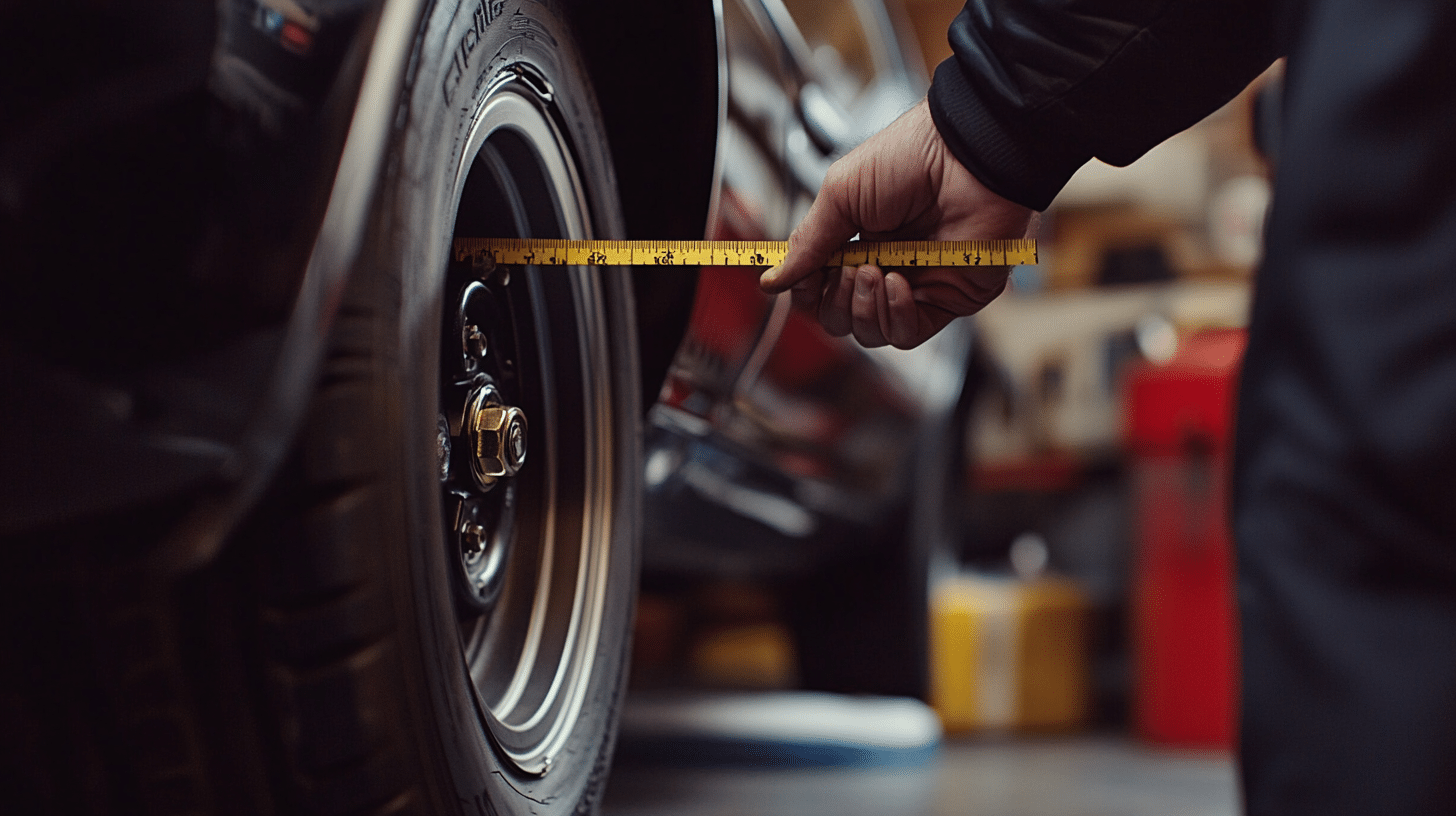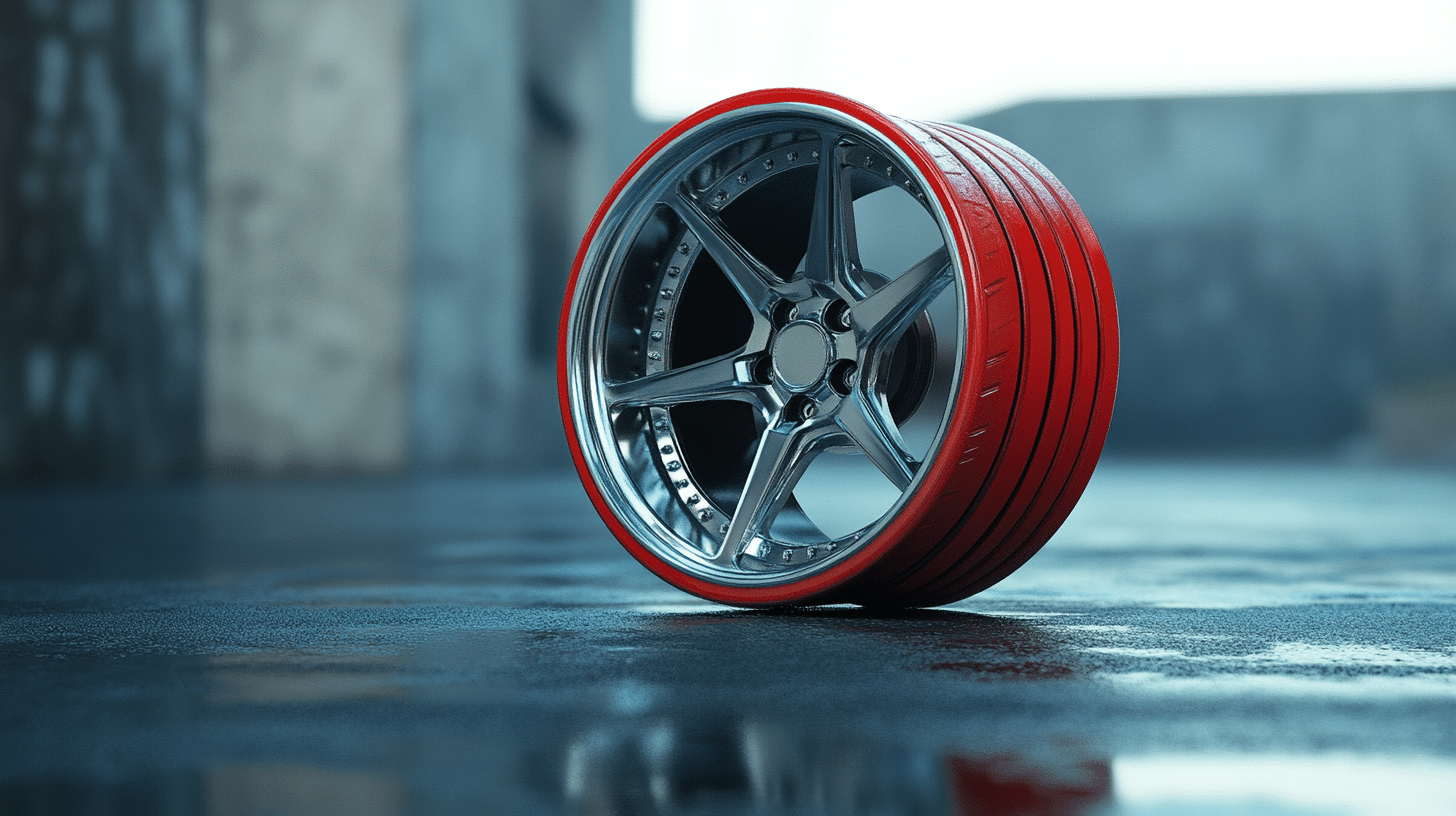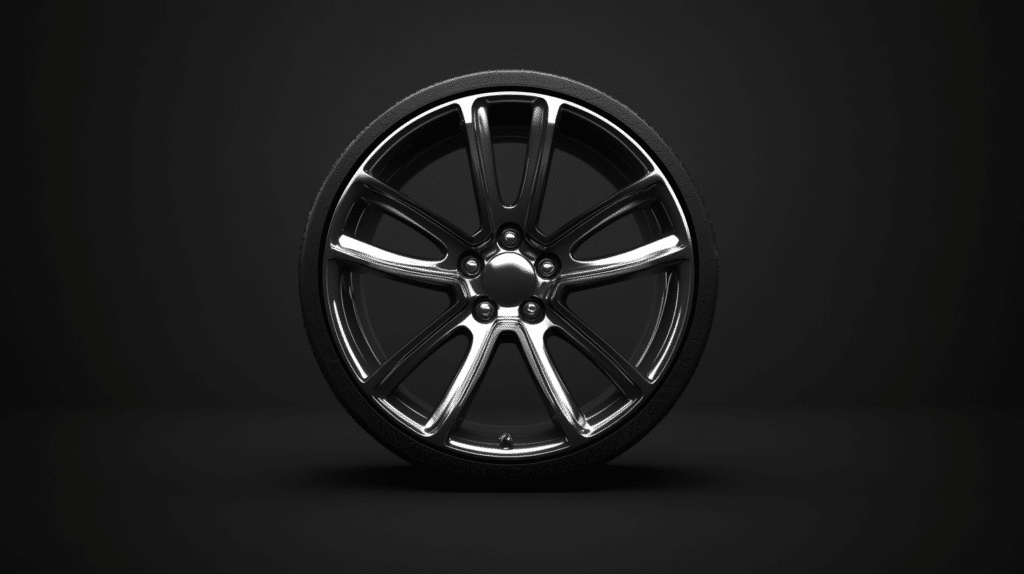Car wheels play a crucial role in vehicle performance and safety. The 5×5.5 bolt pattern is a common wheel configuration used by many popular car brands.
However, finding the right wheel fit can be tricky, especially when dealing with specific bolt patterns.
In this article, I’ll explain everything you need to know about the 5×5.5 bolt pattern. I’ll cover what it means, which cars are used, and how to measure them correctly.
My goal is to help you understand:
- The basics of the 5×5.5 bolt pattern
- Popular car models that use this configuration
- How to measure your wheel’s bolt pattern
- Tips for finding compatible wheels
Let’s begin your journey to becoming a 5×5.5 bolt pattern expert!
What Is the 5×5.5 Bolt Pattern?
The 5×5.5 bolt pattern, or 5×139.7mm, is a specific layout of studs on a vehicle’s wheel hub. Many trucks and SUVs use this common design.
This pattern has five lug holes placed in a circle. Each hole is the same distance from its neighbors. The circle made by these studs is 5.5 inches across. Some places use millimeters instead, so you might see it listed as 139.7mm.
Bolt patterns are key to ensuring wheels fit right on a vehicle’s hub. This pattern is often chosen for certain types of vehicles because it’s strong and can handle heavy loads.
The 5×5.5 pattern is found on some Ford, Dodge, and Jeep models. It’s a top choice for off-road vehicles and heavy loads.
Knowing your vehicle’s bolt pattern is vital when buying new wheels. It helps you pick fit parts and keep your vehicle safe.
How to Measure the 5×5.5 Bolt Pattern

Measuring your car’s bolt pattern correctly is key for safe wheel fitting. Let’s go through the steps to measure a 5×5.5 bolt pattern in more detail.
Step 1: Get Your Tools Ready
| Tool Type | Tool Name | Purpose | Notes |
|---|---|---|---|
| Essential Tools | Measuring Tape or Ruler | Used to measure the bolt pattern in both inches and millimeters. | Preferably one with both inches and millimeters for versatility. |
| Bolt Pattern Gauge | Simplifies the measurement process, ensuring quick and accurate results. | Ideal for mechanics or those frequently measuring bolt patterns. | |
| Optional Tools | Caliper | Provides more precise measurements, reducing the margin of error. | Helpful for those needing utmost precision, though not essential. |
| Recording Tools | Pen and Paper | Used to document measurements to prevent errors during wheel selection. | Simple yet effective for tracking and future reference. |
Using the right tools helps avoid mistakes. A digital caliper can give you the most exact measurement if you have access to one.
Step 2: Find the Lug Holes
Look at your wheel hub. You should see five holes in a circle. Make sure the area is clean so you can measure well. Remove any dirt or rust that might get in the way of an accurate reading.
Step 3: Take the Measurement
Here’s how:
- Pick one lug hole as your starting point
- Measure from its center to the outer edge of the hole farthest from it
- Don’t measure to the closest hole – that’s not the right method for a 5-lug pattern
- The distance should be 5.5 inches or 139.7mm for a 5×5.5 pattern
If using a bolt pattern gauge, place it over the lug holes and rotate until all five holes line up with the gauge’s markings.
Step 4: Check Your Work
Look in your car’s manual or online to confirm the bolt pattern. It’s good to check twice to be sure. If your measurement is slightly off, try again. Small errors can lead to big problems when fitting wheels.
Step 5: Write It Down
Keep a note of your measurement. You’ll need this when buying new wheels for your car. Include both the inch and millimeter measurements to avoid confusion later.
Why Choose a 5-Lug Pattern?

Many car makers use 5-lug patterns, like the 5×5.5, for good reasons. Let’s take a deeper look at why this design is often picked over others, such as 4-lug patterns.
1. Strength and Load Capacity
Five lugs spread the car’s weight better than four. This means:
- The wheel can handle more weight overall
- There’s less stress on each individual lug
- The wheel is less likely to come loose over time
- It can better handle the forces of acceleration, braking, and cornering
This is why many trucks and SUVs use 5-lug patterns. They can carry heavy loads more safely, whether it’s cargo in the bed or a full cabin of passengers.
2. Better Performance
5-lug wheels often lead to:
- More stable handling, especially when turning at higher speeds
- Better grip on the road, which is crucial for performance driving
- Less wear on tires and brakes due to improved weight distribution
- Reduced chance of wheel flex under hard cornering
This can make your drive smoother and safer, especially in demanding conditions.
3. More Wheel Options
Many aftermarket wheels come in 5-lug designs. This gives you:
- More choices for customizing your car’s look
- Easier to find replacements if a wheel gets damaged
- Options for different styles and sizes to fit your driving needs
- Ability to upgrade to larger wheel sizes without changing lug patterns
4. Handling High Speeds
Five lugs hold up better at high speeds. They:
- Reduce wheel wobble, which can be dangerous at highway speeds
- Keep the wheel more securely attached during rapid acceleration
- Handle the forces of fast driving better, including sudden direction changes
- Provide more consistent performance in racing or high-performance driving situations
5. Durability and Longevity
5-lug wheels tend to last longer because:
- The load is spread across more points, reducing wear on each lug
- There’s less chance of lug nuts coming loose over time
- They can better withstand the repeated stresses of daily driving
Vehicles that Use the 5×5.5 Bolt Pattern
| Brand | Model | Manufacturing Years |
|---|---|---|
| Ford | Bronco | 1966 – 1996 |
| F-100 | 1953 – 1983 | |
| F-150 | 1987 – 1996 | |
| Chevrolet | Tracker | 1989 – 2009 |
| Dodge | Ram 1500 | 1994 – 2010 |
| Dakota | 2005 – 2011 | |
| Durango | 2004 – 2009 | |
| Jeep | CJ | 1945 – 1986 |
| Toyota | Blizzard | 1984 – 1990 |
| Kia | Sportage | 1994 – 2006 |
| Mazda | Proceed Levante | 1995 – 2000 |
| Suzuki | Jimny | 1987 – 2023 |
| Grand Vitara | 1998 – 2005 | |
| RAM | 1500 Classic | 2019 – 2023 |
| Rivian | R1S | 2022 – 2024 |
| R1T | 2021 – 2024 | |
| UAZ | Hunter | 2003 – 2024 |
| Mitsubishi | Raider | 2006 – 2009 |
Understanding the Measurement System (Inches vs. Millimeters)
Different places use different ways to measure things. This is why we see bolt patterns listed in both inches and millimeters.
Converting Between Inches and Millimeters: The 5×5.5 measurement is in inches. The same thing in millimeters is 5×139.7mm. Here’s how it works: 1 inch equals 25.4 millimeters. So, 5.5 inches becomes 139.7 millimeters.
Why Measurement Systems Matter: Some parts of the world like Europe and Asia use millimeters. The United States often uses inches. Knowing both can help you when you’re looking at wheels from different countries.
Think Globally: If you work with cars from all over, you need to know both systems. Some makers list their specs in inches, others in millimeters.
Don’t Make Mistakes: Always check the numbers twice when picking wheels. Make sure they match your car’s bolt pattern. This is extra important when you’re buying parts from other countries or aftermarket shops.
Conclusion
As I wrap up our look at the 5×5.5 bolt pattern, let’s recap the key points:
- This pattern has five lug holes spaced evenly in a 5.5-inch circle.
- It’s common in trucks and SUVs due to its strength and load capacity.
- Knowing how to measure it correctly is crucial for wheel fitting.
- The 5-lug design offers better performance and more wheel options.
Understanding your vehicle’s bolt pattern is vital for safety and performance. Whether replacing a damaged wheel or upgrading your ride, this knowledge will serve you well.
Remember, always double-check measurements and consult your vehicle’s manual when in doubt. If unsure, it’s best to ask a professional for help.
I hope this guide has been helpful in your wheel-fitting journey.


